Remember when everyone thought inflation was finally under control? Think again. While politicians and Wall Street celebrate modest improvements in headline inflation numbers, a deeper look at the data reveals some concerning trends that could affect your wallet in the months ahead.
The Numbers Behind the Headlines
Yes, headline inflation held steady at 2.7% in July. But that number got a lot of help from falling gas prices – something that can change quickly. When economists strip out the volatile food and energy costs to look at "core" inflation, the picture is less rosy at 3.1%.
Even more concerning is what economists call "supercore" inflation – which excludes housing costs too. That number sits at a worrying 3.6%, well above the Federal Reserve's 2% target.
Think of it this way: if you remove the categories that happen to be doing well right now (gas and some housing costs), the underlying inflation pressure is still running hot.
The Real Problem: Services Keep Getting More Expensive
Here's where things get tricky. For years, cheap imported goods – especially from China – helped keep inflation low. But now we're seeing price increases in two key areas:
Service costs (like haircuts, restaurant meals, and medical care) continue rising because they require human labor, and wages are going up.
Imported goods are starting to cost more due to new tariff policies designed to encourage domestic manufacturing.
Recent monthly price jumps tell the story:
Airfares: up 4% in one month
Used cars: up 0.5% (a surprise increase)
Medical services: up 0.8%
Furniture and home improvement: significant increases near 0.5 to 1%
The Tariff Factor: Higher Prices by Design
Here's something important to understand: rising prices on imported goods aren't an accident – they're actually part of the plan. The current administration's tariff policies are specifically designed to make foreign products more expensive, theoretically encouraging American manufacturing and jobs.
The catch? American consumers pay those higher prices. And according to Goldman Sachs research, we're only seeing about 22% of the tariff impact so far. Companies have been absorbing most of the costs rather than immediately passing them to customers. They want to have more clarity on trade policy and tariff deals before encroaching on their customers’ spendable dollars. This makes sense in the short run, but that can't last forever.
Items already showing tariff-related price increases include:
Children's clothing: up 3.3%
Women's dresses: up 2.7%
Tools and hardware: up 1.6%
Coffee: up 2.3%
(That last one should worry anyone who can't function without their morning cup – the U.S. grows almost no coffee domestically.)
Why This Puts the Federal Reserve in a Bind
The Federal Reserve faces what economists call a "dual mandate" – they're supposed to keep both inflation and unemployment low. Right now, they're getting pulled in opposite directions:
Unemployment is rising, which typically calls for cutting interest rates to stimulate job growth
Inflation remains stubbornly high, which typically calls for keeping rates high to cool down the economy
Wall Street is betting the Fed will cut rates next month to address unemployment concerns. But here's the problem: if inflation isn't actually under control, cutting rates could make it worse.
The Data Problem: Garbage In, Garbage Out?
There's another wrinkle: the economic data we all rely on isn't perfect. Monthly jobs reports depend on surveys that companies don't always fill out accurately or quickly. This leads to frequent revisions that can completely change our understanding of what's happening.
It's like trying to navigate using a GPS that's sometimes off by several miles. The information is better than nothing, but you need to account for potential errors in your planning.
What This Means for Regular People
The bottom line is that the inflation story isn't over, despite what some headlines suggest. Here's what to watch for:
In the short term: Expect continued price pressures on services (dining out, healthcare, personal services) and potentially higher costs for imported goods as companies pass along more tariff costs.
For your finances: Don't assume interest rates will fall dramatically. The Fed may be forced to keep them higher for longer than markets expect if inflation doesn't cooperate.
The bigger picture: We may be entering a period where the Federal Reserve's traditional tools – raising and lowering interest rates – aren't well-suited to solve our economic problems. This could mean greater economic volatility ahead.
The Historical Context
For about 20 years before 2022, Americans got used to low, stable inflation thanks largely to cheap Chinese imports. That era appears to be ending, replaced by trade policies that deliberately make imports more expensive and service-sector inflation driven by rising wages.
This isn't necessarily good or bad – it's a policy choice with trade-offs. The goal is more American manufacturing jobs, but the cost is higher prices for consumers, at least in the short term.
Looking Ahead
The next few months will be crucial. The Federal Reserve will need to decide whether to prioritize fighting unemployment or inflation. Their choice will significantly impact everything from mortgage rates to stock prices to the cost of your weekly grocery trip.
One thing seems certain: the days of assuming inflation will stay low forever are probably over. Americans may need to adjust to a world where prices rise more consistently, even if economic policymakers can keep that rise at a manageable pace.
The challenge will be whether wage growth can keep up with price increases – and whether the promised benefits of bringing manufacturing back to America will materialize before the costs of higher prices become too painful for consumers.
Staying Prepared
Inflation and market uncertainty don’t have to derail your financial goals. At Aspire Planning Associates, we provide personalized financial strategies to help you protect your wealth and move forward with confidence. Call us today at (925) 938-2023 to get started.



